Analyzing the transfer & commitment patterns of top 100 recruits

This is Part I of Sports Illustrated's study on player and coach movement in college basketball. Part II focuses on movement of head coaches and assistants from 2006-07 to the present. Additional research for this study was contributed by Chris Johnson, Jake Fischer and Harrison Malkin.
How often do elite basketball prospects transfer between high schools, commit and decommit to colleges, and transfer once they're in college? Their decisions are highly scrutinized but rarely quantified. This Sports Illustrated study does the latter, by tracking choices made by the Recruiting Services Consensus Index's Top 100 players from each of the past nine recruiting classes (2007-2015).
For a sample of nearly 900 players, SI kept data on all the high schools they attended; their recruiting commitments and decommitments to colleges, and the reported dates of those decisions; and finally, the colleges they attended. This is what the study tells us about the modern, elite player:
One-third of top-100 recruits go on to transfer in college, but that rate has risen in recent years.
From the classes we've been able to track through at least four seasons post-high school (2007, 2008, 2009, 2010 and 2011), the percentage of players that attended multiple colleges is 33.8.
Remove the one-and-done and straight-to-the-pros players from that sample, and the percentage that attended multiple colleges jumps to 37.0.
The transfer rate has increased each season, to the extent that the most recent class with four college years completed, 2011, has seen 46.7% of its non-one-and-done players attend multiple colleges. One of the preseason frontrunners for national player of the year awards, Gonzaga's Kyle Wiltjer, is among that group: He began his career at Kentucky in 2011, won a national title, left in 2013; and is now entering his senior campaign with the Zags.
Here's a visualization of the college-transferring trend among our sample of top-100 recruits:
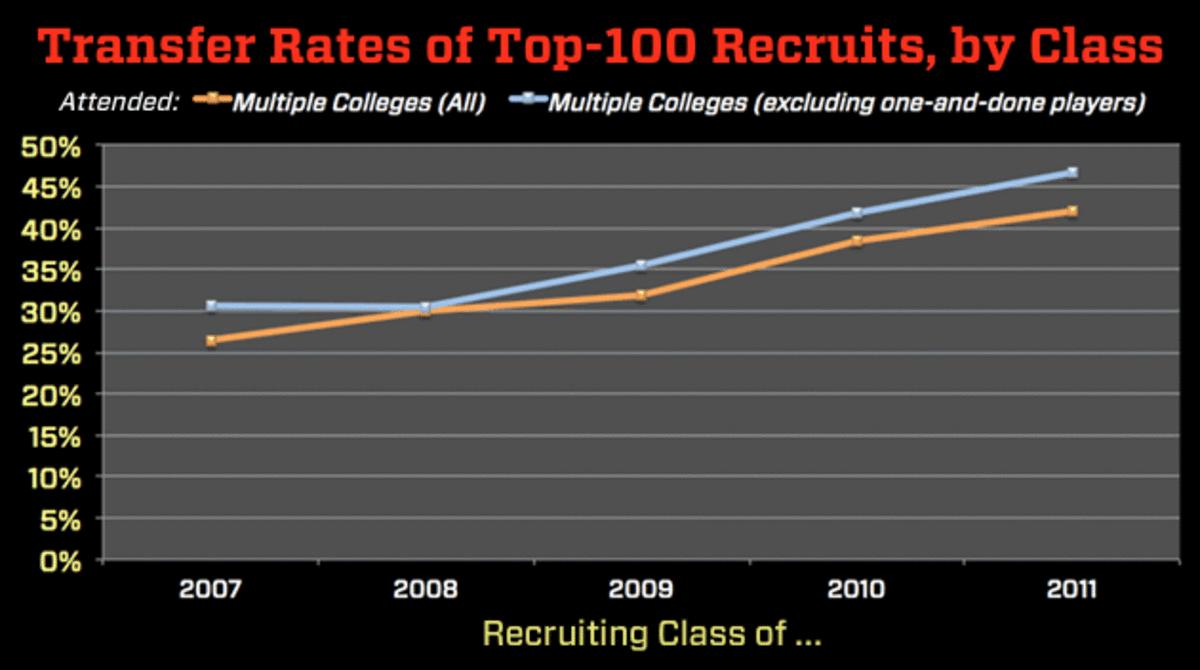
Despite many of their college careers still being incomplete, 26.7% of the non-one-and-dones from our class of 2012 sample have transferred, along with 24.2% of the class of 2013, and 11.9% from the class of 2014.
(The transfer rates for top-100 players, it should be noted, aren't much different from transfer rates for normal students. A recent study from the National Student Clearinghouse Center followed the freshman class of 2008 for six years, and found that 34.7% of four-year students had transferred during that time.)
Nomadism is more extreme at the high-school level, where approximately half of top-100 recruits attend multiple schools prior to college.
Of the players in the study, 45.9% attended two or more high schools, but the transferring trend is getting stronger: Over the most recent three classes (2013, 2014, 2015), 51.5% of players attended multiple high schools.
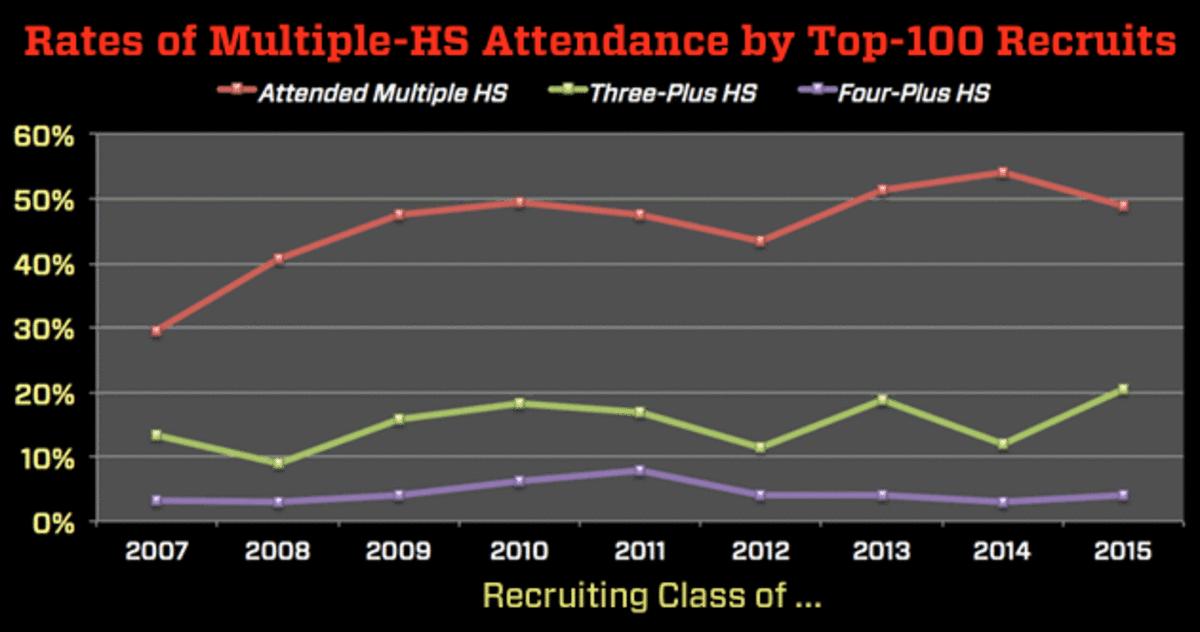
One factor contributing to the rise of high-school transients is the growing popularity of elite academies such as Findlay Prep (Henderson, Nev.) and Montverde (Fla.) Academy, which attract de facto all-star teams of elite transfers and play national schedules. Findlay has accounted for 11 high-school transfers over the past three classes of top-100 recruits, while Montverde has accounted for 10.
The class of 2015 top 100 had three recruits who made four stops in high school: Arizona's Allonzo Trier, who attended homeschooling centers in Oklahoma City and Tulsa, Okla., as well as Montrose Christian (Rockville, Md.) and Findlay Prep; Ohio State's Austin Grandstaff, who did two separate stints at Rockwall (Tex.) H.S., as well as one at Shepton H.S. (Plano, Tex.) and Huntington Prep; and Auburn's Danjel Purifoy, who did two stints at Bibb County H.S. (Centreville, Ala.), one at Hargrave Military Academy (Chatham, Va.) and another at Cahawba Christian Academy (Centreville, Ala.).
The class of 2015 also included the study's record-holder for high-school transfers, Rutgers' Corey Sanders, who had seven different high school stints (six at schools in Florida and one at Faith Baptist Christian in Ludowici, Ga.).
The percentage of top-100 players who decommit from their original verbal commitment to a college is 16.0.
This rate has held steady over the nine years of our sample:
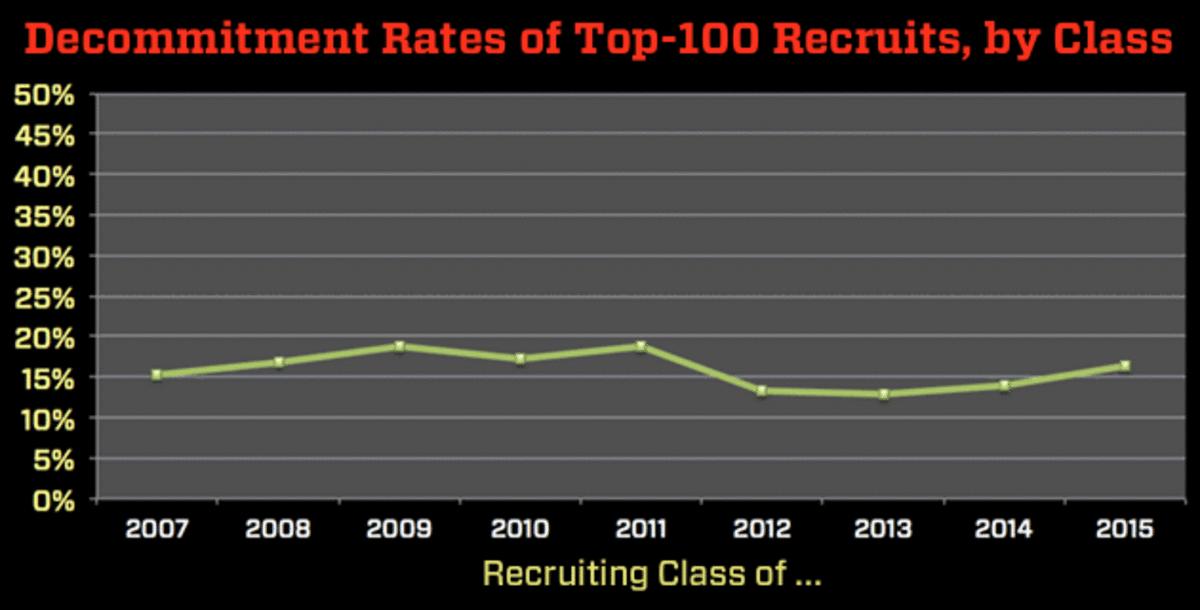
It's rare for a recruit to make two or more decommitments. Only 1.7% of the sample did so, including two members of the class of 2015: Noah Dickerson, who verbally pledged to Georgetown in May 2014, then Florida in August 2014, then Washington in June 2015, after Billy Donovan left the Gators for the NBA; and Jaquan Lyle, who verbally pledged to Louisville in June 2013, then Oregon in March 2014, then Ohio State in January 2015.
Players who made extremely early commitments had a much higher decommitment rate, as well as a high college transfer rate.
Thirty-four players in our study made a verbal commitment in a calendar year at least three years prior to their arrival at college. Eighteen of them (52.9%) went on to decommit, and of the non-one-and-done players, 48.1% of them went on to transfer colleges.
Elite recruits from the class of 2015 mostly avoided extremely early commitments. The earliest verbal pledge was by No. 83-ranked Maverick Rowan, who committed to Pitt on June 2, 2013; he decommitted in 2014 and may make his college decision this week. Among the classes in our study, 2015 also had the highest volume of players (11) who waited until April or later of their senior year of high school to make their first commitment.
This chart visualizes how each year's top 100 develops from 0% committed to 100%, over time:
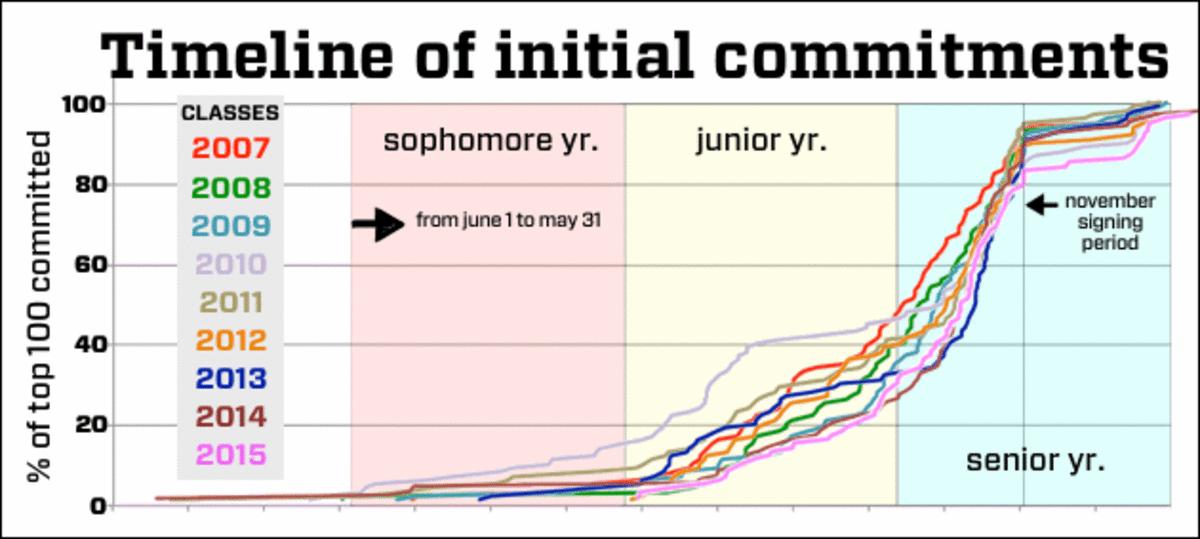
The college transfer rates of multiple-high school attendees were much higher than those of single-high school attendees.
This chart breaks down the college transfer rate of non-one-and-done players in our study from the classes of 2007-11:
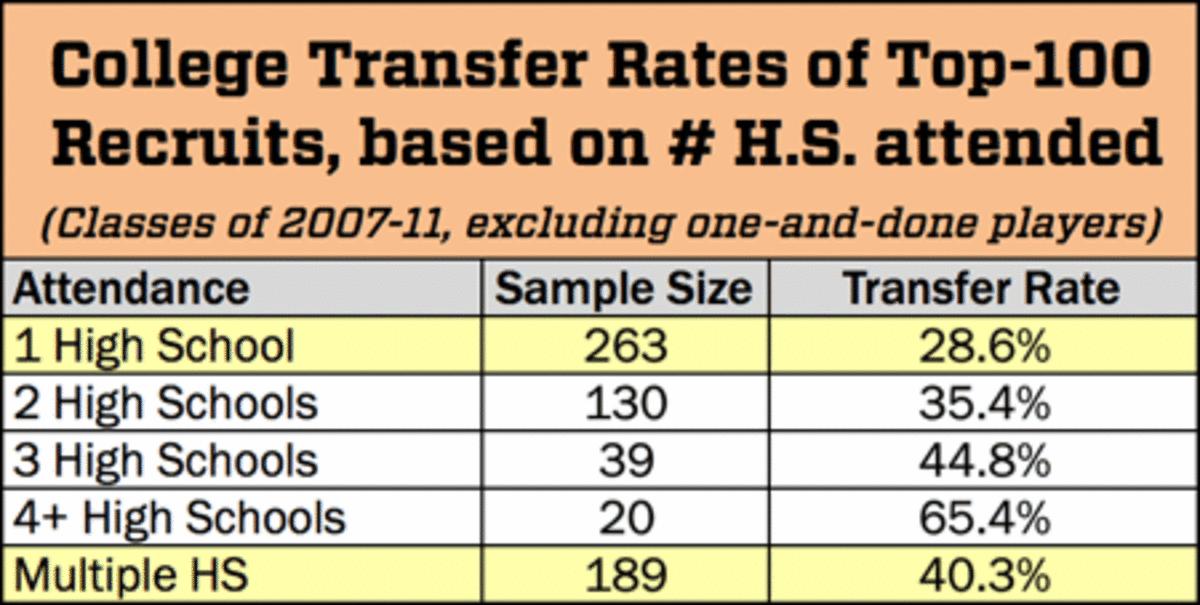
Players who decommitted during the recruiting process transferred colleges at a much higher rate than single-committers.
Of non-one-and-done players from the classes of 2007-2011, nearly half of multiple-committers went on to play at multiple colleges, compared to less than one-third of single-committers.
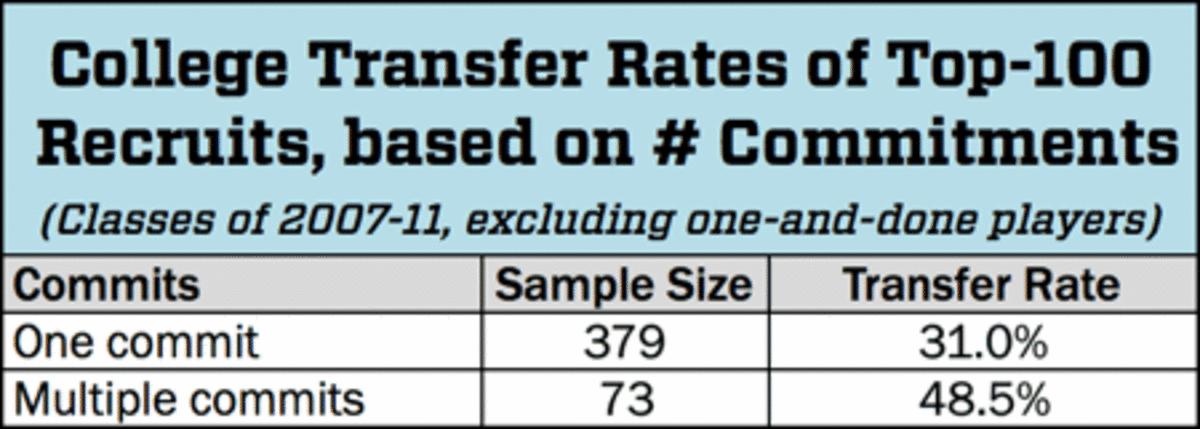
Part I of SI's study shows that today's elite basketball prospects are often on the move. Nomadism is lamented by coaches, but is that a hypocritical stance? Part II puts transfer rates in context with coaching turnover, and shows that players are hardly the sport's only transients.
Notes on the Study
• The Recruiting Services Consensus Index (RSCI) is a composite ranking of major recruiting services. The 2015 version included Scout, Rivals, ESPN, Van Coleman, PrepStars and 247Sports.
• In cases where a player reclassified forward or backward a season, we moved them to their appropriate class in the study. In two cases, we added in late-reclassifying players that the final update of the RSCI missed: Andre Drummond, in 2011, and Montaque Gill-Caesar, in 2014.
• We counted all high schools and colleges attended, not just the ones for which players appeared on rosters. In instances where players did two separate stints at one school, we counted that as two schools.
